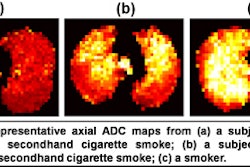Some things just get better with age: A bottle of Bordeaux, a single-malt scotch, family heirlooms, lifelong friendships. However, this same sentiment doesn't apply to your Betamax VCR player, your 5.25-inch computer diskettes, or the pile of Tony Orlando vinyl records uncovered from spring cleaning at your parents' house. Some things just don't age gracefully and MRI technology is one of them.
MRI technology hurtles along at the same speed as the computer industry -- "cutting edge" from a few years ago is today's standard feature, while whatever was au courant a decade ago is hardly remembered today. In fact, it's hardly worth recollecting what happened 10 years ago other than to share "remember when" stories. That's precisely the situation the U.S. Veterans Affairs (VA) Office of Facilities Management found itself in with its "MRI Design Guide," which was last updated in 1996.
While MRI equipment is nearly as large and heavy as it was a dozen years ago, the technology, clinical applications, and financial impact have undergone several radical shifts. The standards for how to plan for and build the physical facilities that support these multimillion dollar pieces of equipment have changed equally dramatically.
However, the VA's "MRI Design Guide" has remained a frozen testament to design principles long passed. As a result, copies of the document have done little but collect dust over the last several years.
But wait! There's great news on the horizon. The VA is revising its entire library of imaging design guides, including the "MRI Design Guide."
All four of the VA's imaging series design guides (MRI, radiology, nuclear medicine, and radiation therapy) are scheduled to be released by the end of 2007 (the 1996 version can be found here). The updates promise to reinstate the VA's design guide resources as the preeminent, free -- and vendor-neutral -- resource for programming and planning imaging and nuclear medicine facilities.
In fact, a good portion of the updated information is available now through the VA's space planning criteria, including specific resources for MRI and radiology. While these documents don't have the specific technical layout details that will be included in the forthcoming design guides, they provide a detailed picture of the raw space requirements, and basic ancillary equipment needs, for a MRI department.
Although they're intended to facilitate the planning of VA facilities, they can be of great use to anyone needing to evaluate physical facility needs in support of imaging equipment.
On Wednesday, we'll provide a preview of some of the specific updates to be found in the new VA's "MRI Design Guide." You'll also have the option of signing up for an e-mail notification from MRI-Planning as soon as the updated guide is available. This is one resource you will not want to be without.
By Robert Junk and Tobias Gilk
AuntMinnie.com contributing writers
December 3, 2007
Reprinted from www.mri-planning.com by permission of the authors. If you would like more information on any aspect of MR facility design or safety, please contact Robert Junk or MRI-Planning.com.
Related Reading
The million dollar question: How much should MRI suite construction cost? November 12, 2007
DRA vs. MRI: Why demographics will keep the modality alive, November 8, 2007
Joint Commission MR safety surveys: Moving past the fire extinguisher, August 29, 2007
Total process management for efficient MRI suites, August 8, 2007
Magnet room finishes: Protect MRI safety and efficiency when building, August 14, 2006
Copyright © 2007 MRI-Planning


.fFmgij6Hin.png?auto=compress%2Cformat&fit=crop&h=100&q=70&w=100)





.fFmgij6Hin.png?auto=compress%2Cformat&fit=crop&h=167&q=70&w=250)











